Poland began to form into a recognizable unitary and territorial entity around the middle of the 10th century under the Piast dynasty. In 1138, Poland fragmented into several smaller duchies when Bolesław divided his lands among his sons. In 1320, after a number of earlier unsuccessful attempts by regional rulers at uniting the Polish dukedoms, Władysław I consolidated his power, took the throne and became the first king of a reunified Poland.
Polish-Lithuanian Union (1386-1569)
Beginning with the Lithuanian Grand Duke Jogaila (Władysław II Jagiełło), the Jagiellon dynasty (1386–1572) formed the Polish–Lithuanian union. The partnership brought vast Lithuania-controlled Rus’ areas into Poland’s sphere of influence and proved beneficial for the Poles and Lithuanians, who coexisted and cooperated in one of the largest political entities in Europe for the next four centuries.
Polish-Lithuanian Commonwealth or the First Polish Republic (1569-1795)
The 1569 Union of Lublin established the Polish–Lithuanian Commonwealth, a more closely unified federal state with an elective monarchy, but which was governed largely by the nobility, through a system of local assemblies with a central parliament. From the middle of the 17th century, the nobles’ democracy, suffering from internal disorder, gradually declined, thereby leaving the once powerful Commonwealth vulnerable to foreign intervention.
The Three partitions of Poland (1772-1795)
In 1772 the First Partition of the Commonwealth by Prussia, Russia and Austria took place; an act which the ”Partition Sejm”, under considerable duress, eventually ”ratified” fait accompli. Russia and Prussia arranged for, and in 1793 executed, the Second Partition of the Commonwealth, which left the country deprived of so much territory that it was practically incapable of independent existence. Eventually, in 1795 the Commonwealth was partitioned one last time by all three of its more powerful neighbours, and with this, effectively ceased to exist.
The Duchy of Warsaw (1807-1815)
In 1807, Napoleon I of France temporarily recreated a Polish state as the satellite Duchy of Warsaw. But, after the failed Napoleonic Wars, Poland was again split between the victorious powers at the Congress of Vienna of 1815.
Congress Poland (1815-1918)
The eastern part was ruled by the Russian tsar as Congress Poland, which had a very liberal constitution. However, over time the Russian monarch reduced Polish freedoms, and Russia annexed the country in virtually all but name. In 1915 the German Empire occupied Congress Poland and laid out plans to create a German puppet-state called the Kingdom of Poland.
Second Polish Republic (1918-1939)
Shortly after the armistice with Germany in November 1918, Poland regained its independence as the Second Polish Republic. Poland successfully managed to fuse the territories of the three former partitioning powers into a cohesive nation state.
The fourth partition of Poland (1939-1945)
World War II began with the Nazi German invasion of Poland on 1 September 1939, followed by the Soviet invasion of Poland on 17 September. Poland was split into two zones, one occupied by Nazi Germany, the other by the Soviet Union.
Polish People’s Republic (1945-1989)
Near the end of World War II, the advancing Soviet Red Army, along with the Polish Army formed in the Soviet Union, pushed out the Nazi German forces from occupied Poland. The USSR was in the process of incorporating the lands in eastern Poland which it had invaded and occupied between 1939 and 1941. In compensation, the USSR gave Poland former German populated territories in Pomerania, Silesia, and Brandenburg east of the Oder–Neisse line, plus the southern half of East Prussia. These awards were confirmed at the Tripartite Conference of Berlin, otherwise known as the Potsdam Conference in August 1945 after the end of the war in Europe.
Stalin was determined that Poland’s new government would become his tool towards making Poland a Soviet puppet state controlled by the communists. The 1947 election marked the beginning of undisguised Communist rule in Poland, though it was not officially transformed into the Polish People’s Republic until the adoption of the 1952 Constitution.
Third Polish Republic (1989-)
In June 1989 Polish legislative election took place, Poland’s first partially-free election in eight decades. Much to its own surprise, the democratic opposition movement Solidarity took all contested (35%) seats in the Sejm and all but one seat in the fully free elected Senate. The Parliament amended the Constitution on 29 December 1989 to formally restore democracy, the rule of law and civil liberties. This began the Third Polish Republic, and served as a prelude to the fully democratic elections of 1991—only the third free election ever held in Poland.
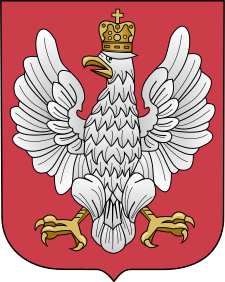 | Republic of Poland | 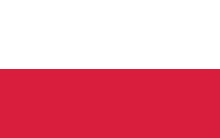 |
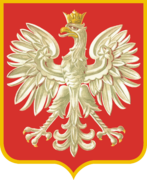 | Republic of Poland | 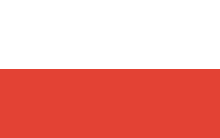 |
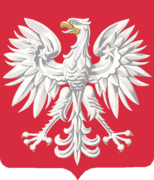 | Republic of Poland |  |
 | Polish People’s Republic |  |
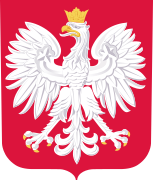 | Republic of Poland |  |
 | Republic of Poland(Member of the European Union) |  |